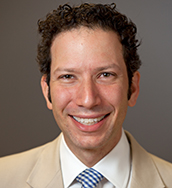Surgical abortion restriction did not decrease clinic visits during pandemic, study shows

LAWRENCE — Abortions have decreased significantly this year, due largely to pandemic-related factors. But other veiled influences stemming from state-related policies have affected this number in surprising ways.
 “We found that foot traffic to abortion clinics went down substantially,” said David Slusky, De-Min and Chin-Sha Wu Associate Professor in Economics at the University of Kansas. “And then in states that limited elective medical procedures, it went down even further. But once you account for both of those two things, we do not see a third decrease for the states that said, ‘Abortion counts as elective surgery.’”
“We found that foot traffic to abortion clinics went down substantially,” said David Slusky, De-Min and Chin-Sha Wu Associate Professor in Economics at the University of Kansas. “And then in states that limited elective medical procedures, it went down even further. But once you account for both of those two things, we do not see a third decrease for the states that said, ‘Abortion counts as elective surgery.’”
His new study titled “COVID-19 Surgical Abortion Restriction Did Not Reduce Visits to Abortion Clinics” finds such visits declined by 32% in 2020 versus 2019 and an additional 23% in states with elective procedure bans, despite that number not being affected by targeted abortion bans. The working paper is distributed by both the National Bureau of Economic Research and IZA - Institute of Labor Economics.
Would most Americans be surprised to learn that abortion restrictions were weaved into COVID-19 protocols?
“There’s a large swath of Americans and the people they elect who want to use every possible tool to reduce abortions in America. This was a tool at their disposal,” said Slusky, who co-wrote the article with KU’s Sylvia Bryan and Martin Andersen of the University of North Carolina at Greensboro.
“Particular state governments said, ‘We’re explicitly listing abortion as elective surgery.’ I see how you can say that and not have it be completely farcical. But I also see how that’s kind of a ridiculous statement.”
According to the article, many states targeted surgical abortion (as opposed to pharmaceutical abortion) as part of their COVID-19 restrictions by deeming these procedures as reasonably deferrable until the pandemic had subsided. This is despite the inevitable growth of an embryo, which eventually becomes a fetus that would have to be aborted through more invasive (and frequently banned) procedures.
With abortion provider information almost impossible to access, Slusky’s team found an innovative, if exhausting, way to gather the data. They utilized SafeGraph, a San Francisco-based geolocation company self-described as the “source for accurate data about every physical place in the world.”
The researchers plugged in the locations of 317 abortion providers located in 42 states and the District of Columbia. Using tracking software on people’s phones, they determined how many individuals entered these locations from February to May of 2020, compared to the same timeframes in 2019.
“We’re not tracking individuals; we’re tracking aggregate flows. So there is no direct privacy issue here because we’re not talking about an individual person,” Slusky said.
Bryan, a KU senior in economics who co-wrote the paper, said they faced numerous challenges when gathering this research.
“It was tricky to define when or if the elective procedure restrictions applied to abortions. In several states the abortion restrictions were litigated — and sometimes re-litigated — in court, causing the restrictions to be paused and then reinstated,” said Bryan, who was recruited by Slusky to collaborate on the study after taking his labor economics class last spring.
She added that the language of the relevant executive orders was often unclear, so it would come down to “governors making comments in press conferences, abortion providers trying to interpret what is legally permissible and local journalists trying to put the puzzle together to create a comprehensive picture for the public.”
Bryan hoped this article would help people remember how state governments can have a decisive influence on their day-to-day lives and how there can be high degrees of uncertainty about the ways laws or executive orders will affect behavior until the evidence comes in.
Slusky, an expert in health economics and labor economics, concurred.
“If the pandemic rates spike to the point that in the winter we want to ban elective procedures again, I can now point to this study and say, ‘You do this, and this is the effect you’ll have on access to reproductive care,’” he said.
“We also know that when we reduce access to abortion, not just abortion rates go down, but birth rates of unmarried women go up and household financial situations worsen. We know if we take this action, then I’d recommend we take other actions to mitigate those unintended consequences.”
Top photo: Pexels.com